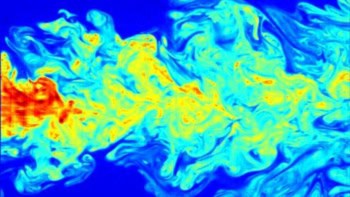
A machine-learning algorithm that filters seismic data to remove noise from human activity has been developed by researchers in the US and China. Called the UrbanDenoiser, the algorithm is trained using noise signals found an urban environment as well as earthquake signals detected in a more rural location.
Owing to their high population densities and heavily built-up environments, cities are especially vulnerable to damage from earthquakes. This risk presents the need for intensive seismic monitoring in urban areas lying close to the boundaries between tectonic plates. This can be difficult, however, because human activities such as traffic and construction also create seismic signals in detectors.
Human noise is a particular problem for seismic monitoring in the Los Angeles metropolitan area. With a population of over 18 million, the megacity lies on a network of fault lines, which form the boundary between the Pacific and North American plates.
Far from the madding crowd
To address the noise issue, Lei Yang at Stanford University and colleagues developed the UrbanDenoiser, which can be trained to recognize human-related noise, and filter it out of natural seismic data. To train their model, the researchers collected 80,000 recordings of seismic noise in the Long Beach area of Los Angeles when earthquake activity was relatively low. Simultaneously, they collected over 33,000 low-noise earthquake signals in San Jacinto – which is about 130 km from Long Beach and outside of the main urban area of Los Angeles.
The team then generated artificial seismic waveforms with different levels of urban noise, by repeatedly combining the San Jacinto training set with randomly selected samples from the Long Beach training set; and then randomly shifting the resulting waveforms.

20,000 channels of seismic data reveal Arctic climate change
Once trained to recognize how urban earthquake signals are masked by human seismic noise, the UrbanDenoiser was used to examine data taken at five stations during an earthquake in 2014 that struck La Habra in the Los Angeles urban area. By filtering out human-related noise, the algorithm detected 10% more seismic events associated with the earthquake than the Quake Template Matching catalogue – currently the most comprehensive earthquake catalogue available for southern California.
UrbanDenoiser still has some issues to iron out, and the researchers now aim to reduce rates of false positives and negatives in their future research. With the ability to improve the quality of earthquake signals collected in urban environments, they hope that the algorithm will allow authorities in earthquake-prone regions to monitor seismic activity more accurately – helping them to better protect vulnerable urban infrastructure.
The research is described in Science Advances.



